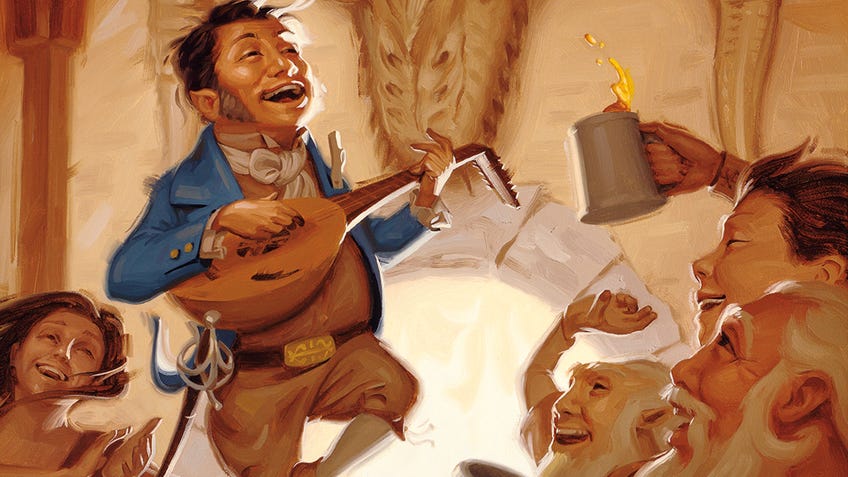D&D 5E bard class guide
Pick the best spells, master Bardic Inspiration and choose the right college to capture the hearts of allies and enemies alike.
Bards are the Marmite peanut butter of Dungeons & Dragons 5E character classes: love them or hate them, you can’t deny that they hold a certain appeal. This appeal may not be as straightforwardly obvious as other D&D classes - bards don’t have the offensive potential of a druid nor the defensive capabilities of a paladin - but it’s definitely there for those players who don’t want to be restricted to a certain combat archetype.
The bard class in D&D 5E has gained notoriety for being a ‘weak’ option because they don’t necessarily fit a required role in a party of adventurers. For example, whereas a cleric can be a healer or a strong support character, the bard class doesn’t have the kind of options that would allow a player character to lean into either in a significant way. However, it can be argued that rather than being its greatest weakness this is, in fact, the bard class’s greatest strength.
Dungeons & Dragons 5E bard class guide
- How to choose bard proficiencies and equipment
- How does Jack of All Trades work?
- Do bards get Expertise?
- How to bard spell work?
- How many spell slots does a bard have?
- What spells does a bard get?
- What is Bardic Inspiration?
- Can you use Bardic Inspiration on yourself?
- How to use Countercharm in D&D 5E
- What are the Bardic Colleges?
- What’s the best race for a bard in D&D 5E?
The bard is the equivalent of a Dungeons & Dragons magician who's capable of pulling any number of tricks out of their sleeves. If you’re undecided as to how to pick your character class in D&D 5E, consider a class that will enable you to take a little bit of everything - the ultimate buffet of spells and skills.
Features like Bardic Inspiration and Song of Rest may initially paint the bard as a support class but, with access to a ton of offensive feats, status effects and utilitarian spells, a bard can realistically serve whatever role the player wants them to. To an extent, anyway. What kind of bard are you going to make? Read our Dungeons & Dragons 5E bard class guide for help with figuring it all out.
How to choose bard skills and equipment

Whilst choosing which starting skills to be proficient with are important to every class in Dungeons & Dragons 5E, it’s an especially important process for creating a bard. Skills - along with a smorgasbord of spells - are a bard’s greatest strength, particularly once they get both the Jack of All Trades and Expertise feats in later levels. A bard’s skills are part of what make them such a utilitarian class, so choosing which ones to start being proficient in first is a crucial step when creating a bard character.
At first level, players can choose three skills for their bard to be proficient in, as well as up to three different types of musical instrument to be proficient in playing. If you’re not sure how proficiency works, get a refresher in our guide to Dungeons & Dragons 5E character creation.
Unless you plan on acquiring some sort of legendary magical bassoon in the future, what kind of instruments your bard is proficient in using doesn’t matter beyond character flavour. Does your bard prefer a violin, flute, harp or bagpipes? It really depends on what kind of music you imagine them playing.
Other equipment includes leather armor and a dagger, the choice of a melee weapon - rapier, longsword or another simple weapon - an additional lute or other musical instrument, and a diplomat’s pack or entertainer’s pack. Whilst the diplomat’s pack has more inside, including a selection of writing materials, the entertainer’s pack contains a disguise kit - a very useful piece of equipment to have if you plan on infiltrating anywhere or need to make a quick getaway. Whichever you choose really depends on whether your bard is a scoundrel or a respectable individual.
How does Jack of All Trades work?
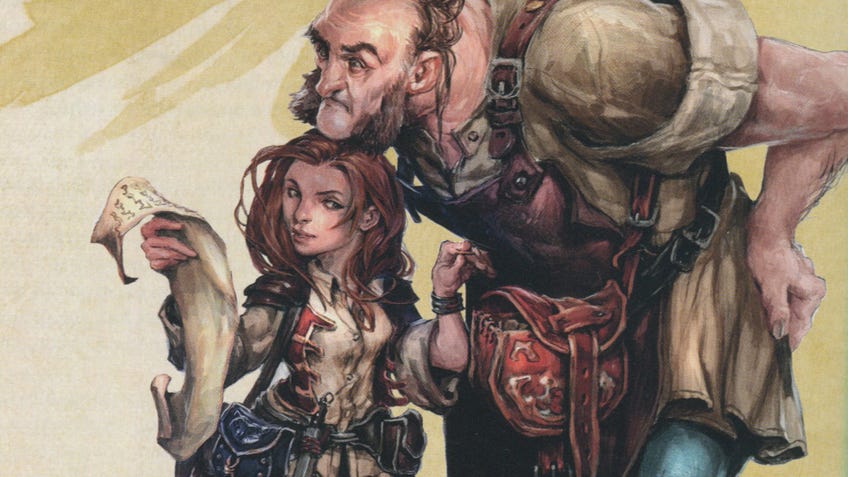
We’re quickly jumping ahead a few levels for this section because Jack of All Trades and Expertise are both directly related to proficiencies. At second level, with Jack of All Trades a bard character can add half their proficiency bonus to any ability check they desire. This essentially means that, from second level, a bard has more chance of passing any potential ability checks regardless of whether they have any existing proficiency in related skills or not. This makes the bard class incredibly versatile at a low level - and the utility potential doesn’t just stop there.
Do bards get Expertise?
At third level, a bard character can use the Expertise feat to double the proficiency bonus for any two skills they’re already proficient in. This essentially helps the bard to specialise in acing certain ability checks - a pretty impressive thing to be able to do at third level. For most other classes, gaining skill proficiencies takes a considerable amount of time and effort, but bards make doing this seem like a piece of cake. When a bard reaches 10th level, they’ll be able to double their proficiency bonus for two more skills.
How do bard spells work?
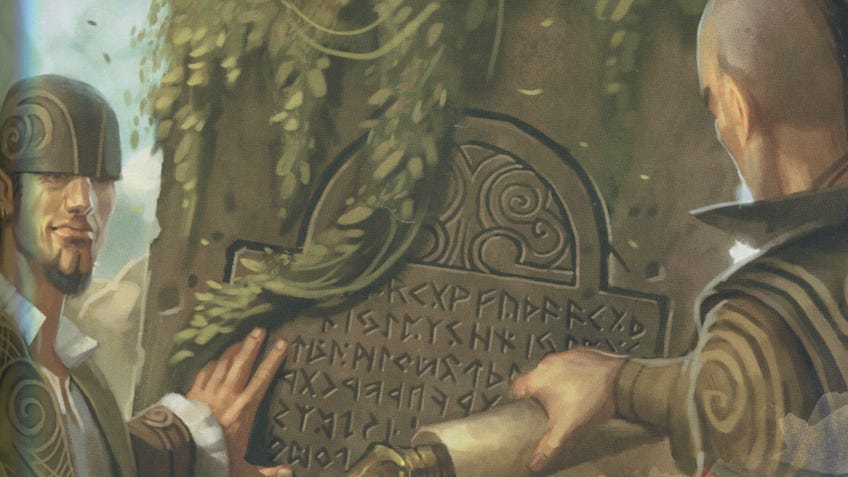
Whereas sorcerers tap into their innate magical essence and warlocks gain magic through bargains with demons, bards use the power of music to access a pool of magical ability. This may seem decidedly quaint, but the bard class has never been shy about being corny.
Like sorcerers, bards use their charisma score to cast spells, with their spell save DC and spell attack bonus coming from their charisma modifier. Spell save DC is worked out by adding a bard’s proficiency bonus and charisma modifier to a total of 8, whereas spell attack comes from adding proficiency bonus to a character’s charisma modifier.
The bard class in D&D 5E has access to something called ritual casting, which means that a bard character can cast a known spell with a ritual tag without expending a spell slot. The process does take 10 minutes, so it’s not exactly the most viable strategy mid-fight - but does have potential when used before or after a combat encounter.
How many spell slots does a bard have?
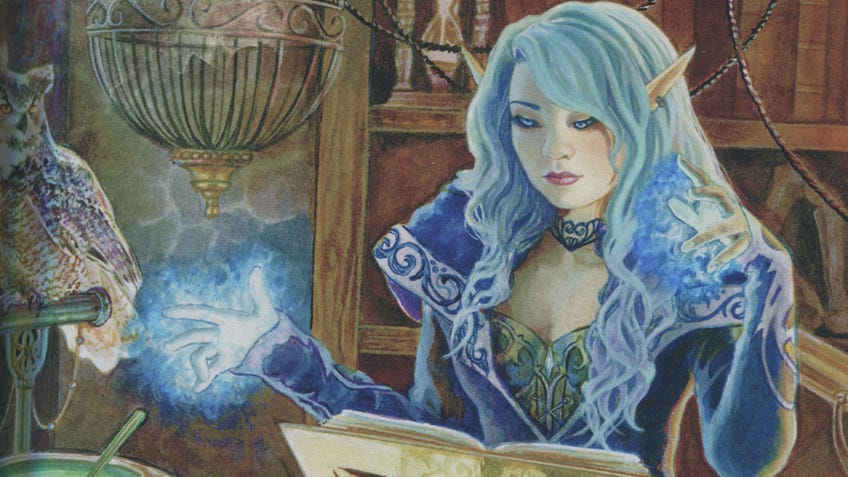
A first-level bard can learn two cantrips from the bard spell list - cantrips don’t cost a spell slot to cast - as well as four level one bard spells. Bards have access to two spell slots to begin with, which means that they can cast a maximum of two spells between long rests
.What spells does a bard get?
Whichever spells you decide to take really depends on what kind of bard you want to craft. There are a lot of genuinely useful spells - such as Mage Hand, Message and Disguise Self - mixed in with a few offensive options, including Thunderwave and Vicious Mockery. And who could possibly forget Hideous Laughter? Whatever you pick isn’t necessarily a be-all and end-all, as bards have the ability to switch out spells whenever they gain a level.
What is Bardic Inspiration?
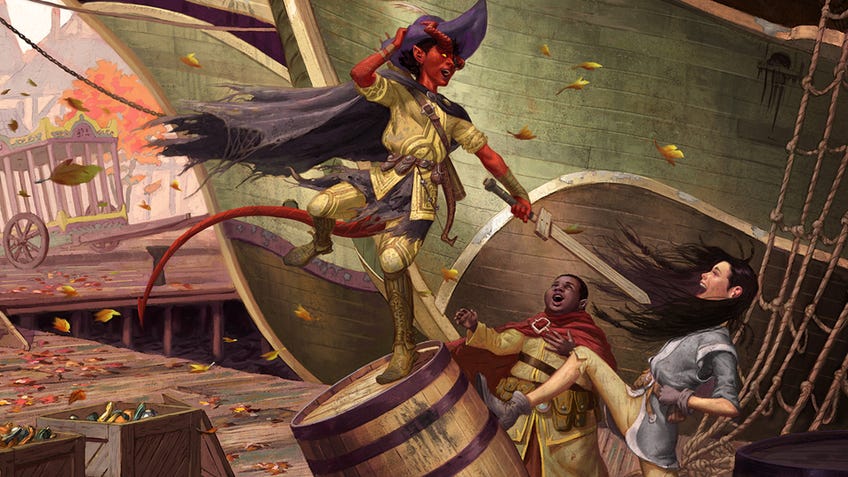
Bardic Inspiration is the signature move of the bard class in Dungeons & Dragons 5E. No other class in D&D can do it and, just like the bard class itself, it’s incredibly versatile.
Bards are granted the power of Bardic Inspiration at first level and are able to use it a number of times equal to their charisma modifier - which makes sense when you consider it to be akin to a baseball coach yelling encouragement at a minor league team. As with bard spell slots, bardic inspiration uses are recharged after every long rest.
Using Bardic Inspiration involves the player character in question choosing someone - preferably a friendly creature within 60 feet - and granting them a Bardic Inspiration die. This die can then be rolled by the person gifted it whenever they want to boost an attack roll, ability check or saving throw within the next 10 in-game minutes. (If you’re not sure what saving throws are, they’re explained in our basics of Dungeons & Dragons guide.) This die can be used before or after the player has rolled their d20, meaning that it can potentially turn the tide of any battle or encounter. A Bardic Inspiration die begins as a d6, but can eventually become a d8, d10 and even a d12 when a bard reaches higher levels.
Can you use Bardic Inspiration on yourself?
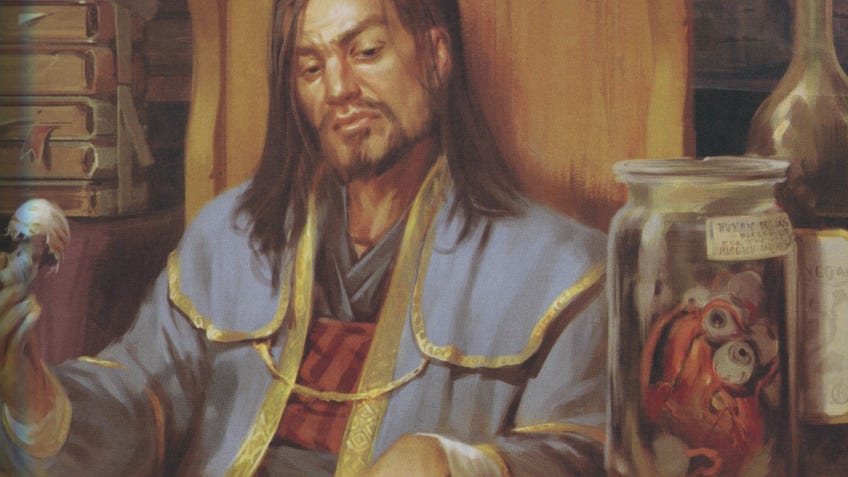
One incredibly important thing to note here is that a bard cannot inspire themselves. Bardic Inspiration can only ever be given to characters other than the bard granting it - meaning that whilst another bard could inspire another bard, it is an ability solely granted by other players.
However, should you decide to have your bard pursue the College of Lore once they hit third level, they will eventually be able to inspire themselves using the Peerless Skill feat when they reach 14th level.
How to use Countercharm in D&D 5E
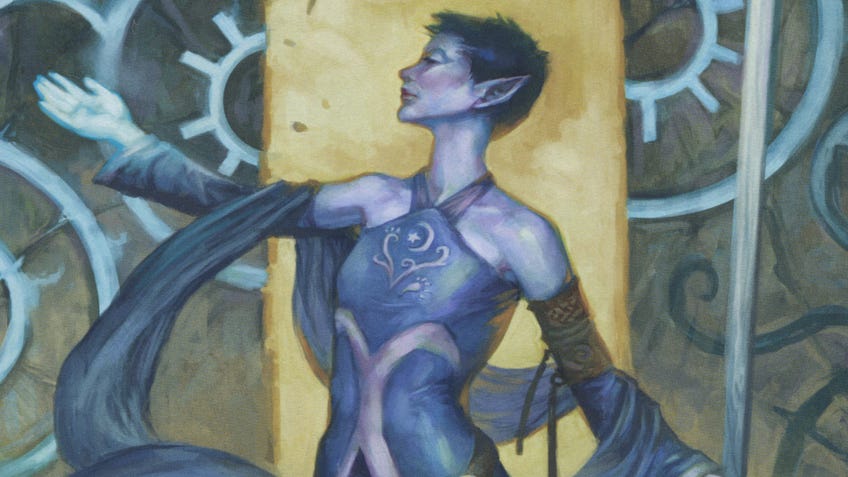
As you get further into your Dungeons & Dragons campaign and the dangers you face become ever greater, there are a few tricks up your bardic sleeves that could help your party out of some tight scrapes.
Negative status effects can be especially scary, particularly those that cause the friendly members of your team to suddenly decide they’d like to work for the other side. This is exactly what the Charmed effect can do and there are plenty of nasty folks out there that might attempt to use it on your party. Luckily, the bard class learns a feat called Countercharm that directly helps to combat the use of Charm spells on party members - and the bard themselves.
When Countercharm is used, the user and any friendly creatures within a 30-foot radius gain advantage on their saving throws against both Charm spells and spells that cause the victim to be frightened. (Which, like Charmed, is not a good thing to have cast on you.) Having advantage means that the player can roll their die twice and can take the higher of the two results.
Should the bard performing the Countercharm - which I like to imagine is a catchy song that the listener cannot stop thinking about - be incapacited or otherwise prevented from playing, the effect ends and players must fend for themselves. Nevertheless, it is an exceptionally useful feat in Dungeons & Dragons 5E.
What are the Bardic Colleges?
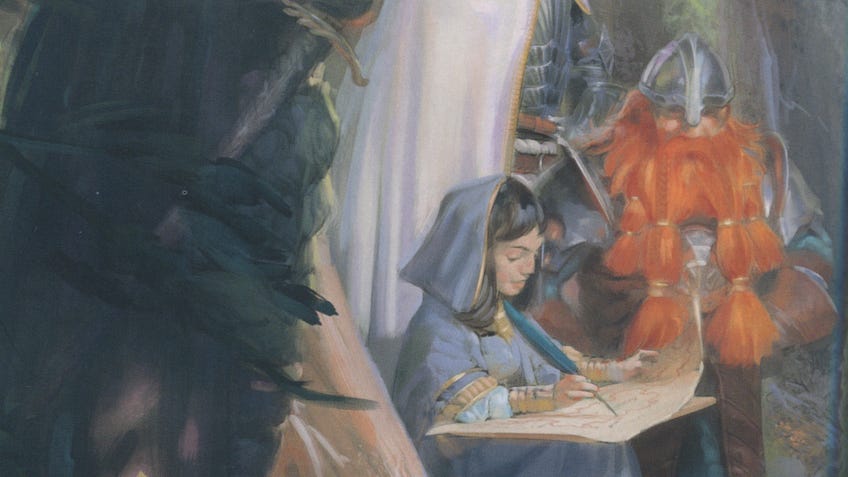
When a bard reaches third level they have to make the all-important choice of which Bardic College they’d like to specialise in. It’s the subclass category of the bard class, with whichever Bardic College you choose determining what additional feats and abilities your bard will get as they gain levels.
Whilst there are two different Bardic Colleges included in the Dungeons & Dragons 5E Player’s Handbook, the College of Lore and College of Valour, there are plenty more included in various other D&D 5E sourcebooks, such as the College of Eloquence - which focuses on improving the bard’s charismatic potential - and the College of Swords, which revolves more around combat and clever swordplay.
There are also plenty of homebrew Bardic Colleges - unofficial examples created by fans - out there for you to use. We’d recommend sticking to the official options if you’re new to the world of D&D, simply because they’re designed for a wide range of players to use.
College of Lore

This is the most straightforward option when it comes to creating a bard character in D&D 5E. A bard from the College of Lore most resembles the type of character we think of when imagining a bard: full of knowledge and folklore they’re determined to share with as many people as possible. A College of Lore bard seeks to tell stories and create a good few of their own, and have features that reflect this particular bardic personality.
As soon as you select the College of Lore at third level, your bard gains proficiency with three skills of your choice - adding to the already impressive skill proficiency your bard has.
On top of the proficiency bonuses, your College of Lore bard gets the Cutting Words feat. Cutting Words is an excellent ability that enables your bard to reduce an opponent’s attack, ability check or saving throw roll as a reaction. A bard with Cutting Words can use one of their Bardic Inspiration dice by rolling and minusing the number from an opponent’s result. As with Bardic Inspiration, the player can choose to use this ability after the DM has already rolled for an opponent - making it a serious game-changer during crucial rounds of combat. You’re also entirely encouraged to improvise whatever you think your bard says to distract the opponent during their roll, which is fantastic.
Sixth level provides the option to learn two spells from any class. Whilst these spells must be of a level your bard can cast - so no ninth-level spell grabs here - the fact that you’re not limited to bard spells gives you a ton of freedom and can help shape your character in a stronger direction.
14th level brings the Peerless Skill feature, which allows a bard to inspire themselves when making ability checks. Finally. This alone could be an appealing enough prospect for you to pick the College of Lore for your bard character.
College of Valour
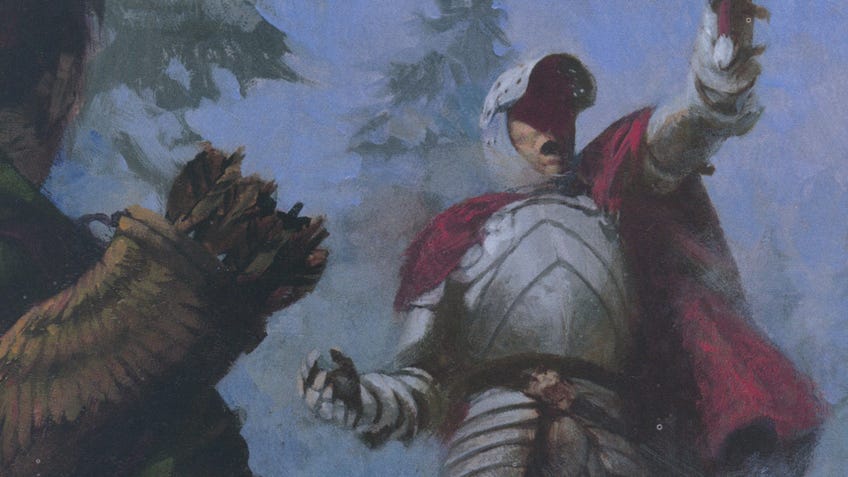
Whereas the bards of the College of Lore might enjoy curling up with a good book in the library, bards of the College of Valour prefer a boisterous feast celebrating the deeds of the mighty and victorious. The Bardic College of Valour is all about singing the praises of warriors and pumping up more aggressive party members during battle. Think of bards of the College of Valour as being the cheerleaders of the brave - imbuing their teammates with power and even mucking in a bit themselves.
If you choose the College of Valour for your bard character, they’ll immediately gain proficiency in using shields, all martial weapons and medium armour - the equivalent of going through a quick workout montage.
As well as the additional equipment proficiencies, bards from the College of Valour gain the Combat Inspiration feat. Whereas normal Bardic Inspiration can only be used to improve the attack roll of a character - as well as ability checks and saving throws - Combat Inspiration additionally enables a player character to improve their damage output. A player with Bardic Inspiration can add that die to their damage roll. Alternatively, the same player can choose to use their Bardic Inspiration die to boost their armor class (AC) either before or after an attack roll has been made against them. Both options offer some very strong advantages in combat.
When sixth level rolls around, a bard of the College of Valour can now attack twice during their turn, further increasing their potential damage output.
14th level and the Battle Magic feature enable a bard of the College of Valour to attack as a bonus action whenever they cast a bard spell on their turn. This means that by 14th level, a bard character could perform an attack and a damage-dealing spell in the space of just a single turn - alongside casting a spell and moving. Gaining this feature effectively turns a bard into a complete death machine with the potential to make their party members into complete death machines as well.
What’s the best race for a bard in D&D 5E?
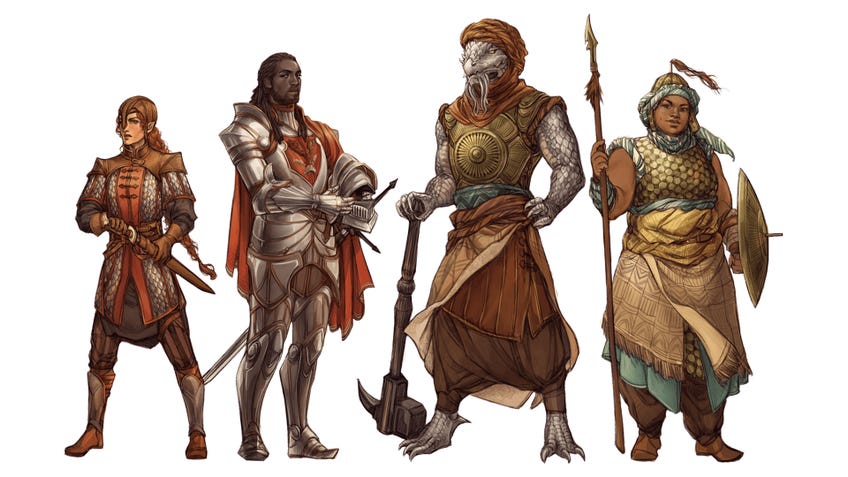
Of course, any race is a viable choice when making a Dungeons & Dragons character and players shouldn’t ever feel limited to making the ‘efficient’ choice. Ultimately, choosing whatever you feel like playing as should be the driving factor. However, there are certain D&D 5E character races that can complement elements of the bard class.
The drow or dark elf race of people - whose problematic depiction has significantly improved with the release of recent D&D 5E sourcebooks such as Explorer’s Guide to Wildemount - could be a great choice for bards considering their increased charisma score. As bards primarily cast magic using their charisma modifier, having a better charisma score from the off could give your character the edge in casting and defending against spells. All elves also have a natural advantage against being charmed, which could help when casting Countercharm.
Halflings are a similarly good choice when it comes to making a spellcasting-focused bard, as the lightfoot subrace of halflings gain an increase to their charisma score. Alternatively, you could choose a stout halfling and gain a higher constitution score, thereby leaning more into a College of Valour-style bard. All halflings also have advantage against being frightened, which would help them when casting Countercharm.
The Dragonborn race are granted a boost to their charisma score and gain damage resistance and the Breath Weapon attack ability, which could make them a formidable choice when it comes to creating a more battle-hardened bard.
A human wouldn’t be a bad pick either, given they have the option to gain proficiency in a skill of their choice during the character creation process - thereby giving your bard character even more skills to play around with.
Looking for more Dungeons & Dragons content? Make sure you check out our guides for the best D&D map makers, best virtual tabletops and best 5E campaigns. If you need a hand with character creation then head to our pages on the best D&D character sheets and the best subclasses.
